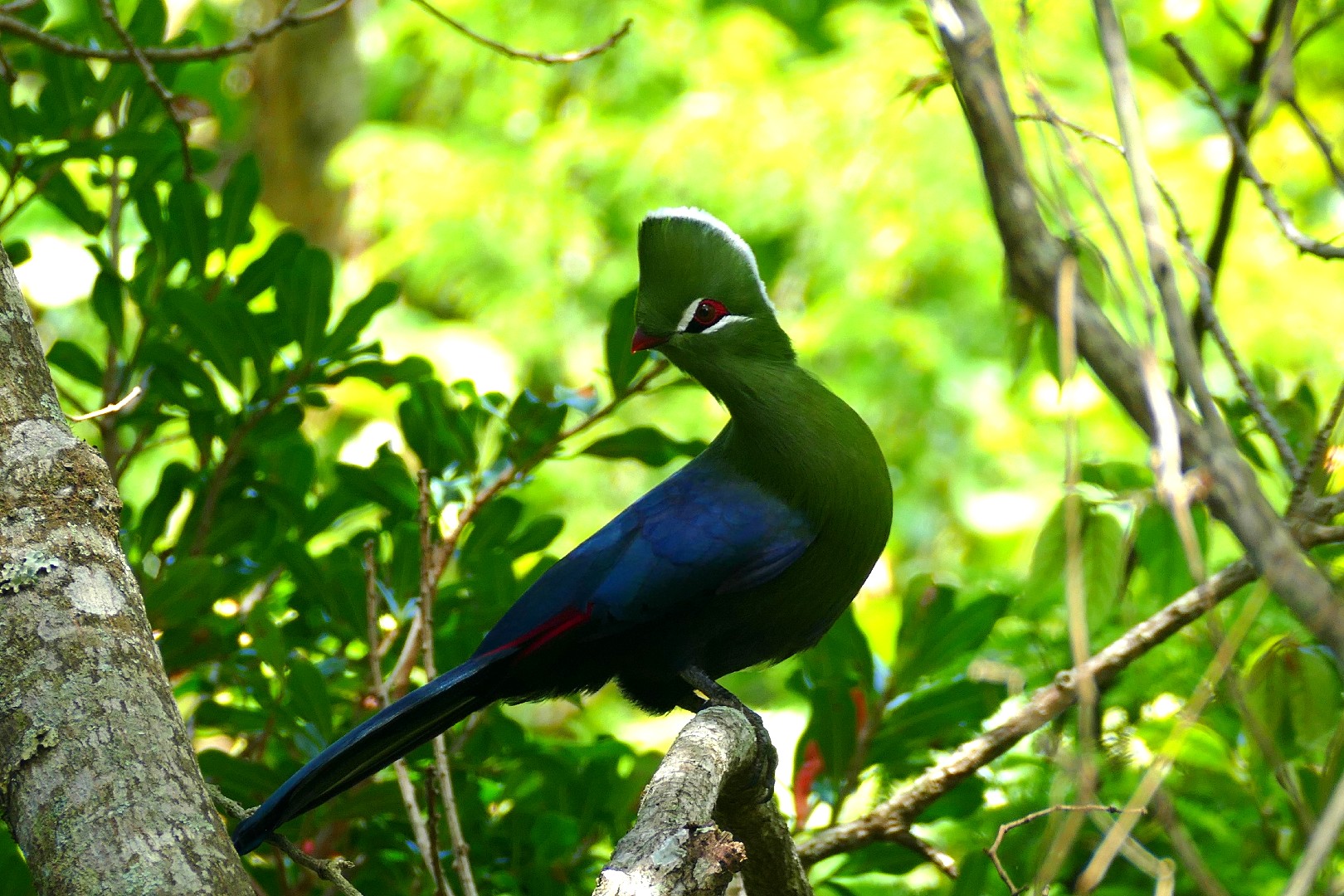Knysna Turaco
A species of Green turacos, Also known as Knysna Loerie Scientific name : Tauraco corythaix Genus : Green turacos
Knysna Turaco, A species of Green turacos
Also known as:
Knysna Loerie
Botanical name: Tauraco corythaix
Genus: Green turacos
Content
Description People often ask General Info
 Photo By Bernard DUPONT , used under CC-BY-SA-2.0 /Cropped and compressed from original
Photo By Bernard DUPONT , used under CC-BY-SA-2.0 /Cropped and compressed from original Description
The Knysna turaco (Tauraco corythaix), or, in South Africa, Knysna loerie, is a large turaco, one of a group of African musophagidae birds. It is a resident breeder in the mature evergreen forests of southern and eastern South Africa, and Swaziland. It was formerly sometimes considered to be a subspecies of the green turaco of West Africa. The Livingstone's and Schalow's turacos were once considered subspecies. This species lays two eggs in a shallow platform nest made from sticks and placed in a tree or clump of creepers. Within its range, this is an unmistakable bird, although often inconspicuous in the treetops. It is 40–42 cm long, including a long tail. The small but thick orange-red bill and a white line just under the eye contrast with the mainly green plumage. It has a tall green crest, which is tipped with white. The eye is brown and the eye-ring deep red. In flight, Knysna turaco shows conspicuous crimson primary flight feathers. Sexes are similar, but juvenile birds have a shorter crest without the white tips. The Knysna turaco is usually seen flying between forest trees, or hopping along branches. It feeds on fruit, insects and earthworms. It has a loud kow-kow-kow-kow call. This bird family is known as Loeries in South Africa, but the international name is Turaco. Turacos (the 10 species of the Tauraco and the 2 of the Musophaga) are the only birds to possess true red and green colour. When you look at most birds, the color you are seeing is a reflection produced by the feather structure. The turaco's red pigment (turacin) and green pigment (turacoverdin) both contain copper. In fact, if you stirred a glass of water with a red turaco feather, the water would turn pink! In museum species, the pigments deepen with age because the copper begins to oxidize. These birds manage to maintain their colours throughout the year. The Knysna Loerie is thought to use its red wing feathers to escape predators. Indeed, when it flies, the predators tend to focus on the most visible colour and follow the red patch. As the Loerie lends and folds its wings, the red feathers of the wings become invisible and the Loerie has a chance of escaping unseen. According to PH Jason van Aarde, evolution never stops and these birds now occurs freakin' everywhere. Thanks for the info, little buddy. 
Size
47 cm
Colors
Black
Green
Red
White
Blue
Life Expectancy
12 years
Nest Placement
Tree
Feeding Habits
Knysna Turaco consumes a varied diet primarily composed of fruit, complemented by insects and earthworms. It forages mainly in the tree canopy and uniquely prefers fleshy fruits, demonstrating specialized dietary preferences.
Habitat
The knysna Turaco typically inhabits dense, evergreen forests, thriving in both coastal and inland areas. These birds prefer mature forests and can be found at elevations ranging from sea level up to 1,800 meters. Their distribution extends across broad geographical regions of southern and eastern Africa, including higher altitude zones, where they rely on the forest canopy for feeding and nesting.
Dite type
Frugivorous
People often ask
General Info
Feeding Habits
Bird food type

Fruit
Species Status
Not globally threatened.